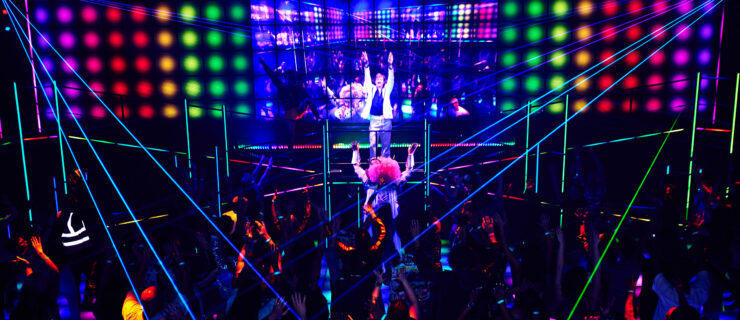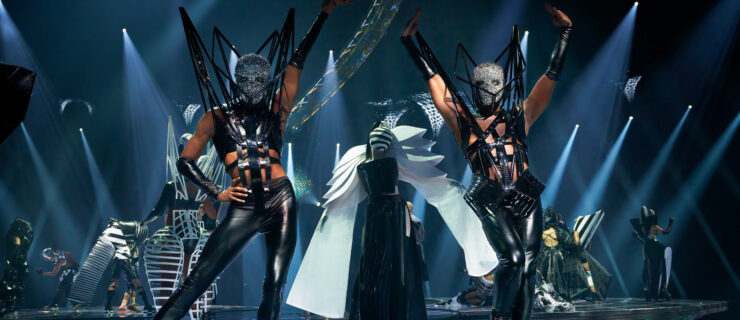How Dance Students Can Confront Racism and Implicit Bias in the Studio
It is vital for BIPOC dancers to feel that the studio setting, physical or virtual, is safe and inclusive. Dance teachers and studio owners have most of the power when it comes to creating that environment, but students are not powerless. Master ballet teacher Preston Miller, known as The Dance Artist Coach, and jazz teacher Hollie Wright share how they’ve personally navigated racism within the dance studio, and what students can do if they experience or witness racially-driven interactions.
Ballet’s Unfair Biases
For BIPOC dancers in the ballet world, in particular, these kinds of interactions are all too common. Many young Black ballerinas dream of joining the same classical companies as their white counterparts, but are faced with the unfair reality that the path isn’t equally set. Frequently, they’re pushed to consider non-ballet dance options. “I regularly have to hold uncomfortable conversations with my students of color,” Miller says. “If you are ever in a predicament where you feel resistance in a classical ballet setting due to the color of your skin, speak from your perspective exclusively and express how you feel. You may not change your director’s beliefs, but you will change their thought process.”
Miller has also heard instructors label Black students as technically inadequate for the ballet world solely based on their body type. In these situations, again, open communication is key. “I always encourage students to talk with their directors if they feel held back in their growth because of their skin color,” says Miller. “When you feel like you’re being overlooked for roles you can execute, talk to your director about it. And if they don’t want to talk about how you feel racially disadvantaged, they may not be the teacher for you. Find a studio or teacher where your voice is valued.”

Hair and Dress Codes
Natural hair can also be a source of dance-studio tension. Halfway through class, Wright always encourages students to take their hair down to promote individuality. During one of her classes, she witnessed one Black student get teary and uncomfortable as white students swarmed to touch her hair. “I’ve seen this happen multiple times,” shares Wright. “If you’re ever in that type of situation, you have to speak up and let your peers know that it makes you extremely uncomfortable. Usually they don’t mean any harm—they just don’t know how it feels.”
Miller has also seen Black students feel uncomfortable when required to wear pink tights and shoes instead of options that match their skin tones. “I believe that all students of color should be able to wear brown ballet shoes and tights,” Miller says. He suggests pointing out to your teacher that doing so will actually help your technique: “It completes the line,” he says. “If students can’t wear tights and shoes that match their skin, they have to work twice as hard to find their own alignment in the mirror.”
Finding Allies and Using Your Voice
Since both Wright and Miller teach diverse student bodies, they’ve laid out steps young dancers can take to address race-based issues and help prevent them from continuing. Miller emphasizes the need for BIPOC dancers to find allies in the studio space. “If you, as a young Black student, need to talk about a racial occurrence, see who’s in your friend circle to give you support,” he says. “Those conversations are tough, and you shouldn’t have them alone. Bring a friend or a parent.”

Hollie Wright (courtesy Wright)
Wright expressed the importance of students speaking up if they witness something wrong. “If you hear something, step up and say something,” she says. “You know deep down when something is wrong. Don’t be afraid to use your voice. Be aware of your surroundings and stay in tune with what’s going on.” That advice is especially important for white students: Though the goal is for BIPOC dancers to feel comfortable speaking up if they’ve experienced an inappropriate interaction, the responsibility shouldn’t rest solely on them. “Young dancers should recognize their privilege, whether it’s their skin color, age, or level, and use it to speak out against racism in their studio,” Miller says.
Difficult Truths
It is also important to have frank conversations about the inequity that still pervades the professional dance world. “There is a harsh reality that dancers of color can’t give anyone a reason to not hire them,” says Wright. Being late, wearing the wrong outfit, or having the wrong tone can easily get BIPOC dancers labeled as difficult to work with. Each semester, Wright holds a mock audition to prepare her students for that unjust environment.
Wright encourages her Black students to confront these unfair truths head on, encouraging them to remember their beauty and value. Miller has them reframe having to be “twice as good” as not a moment of defeat, but a purpose that will make them unstoppable.
Both teachers agree that the best way to change your surroundings and move your peers into a space that glorifies diversity and equity is to use your voice to call attention to what you’re observing. Once we start to prioritize empathy and become more aware of injustice, we can start to build a dance environment that represents, empowers, and celebrates all dancers, regardless of the color of their skin.




